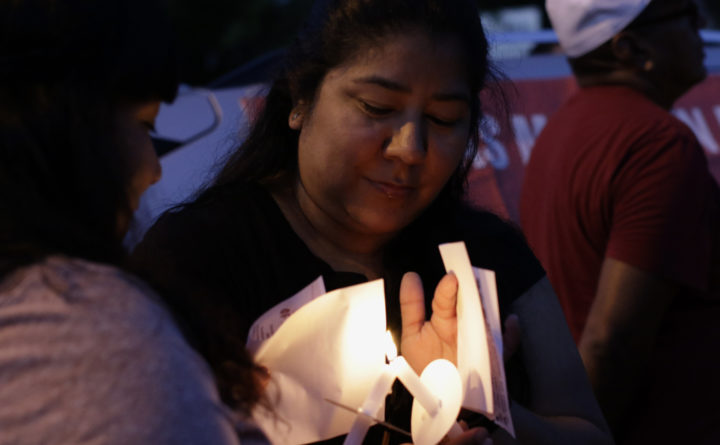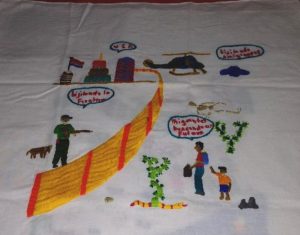Advocacy, Migration, Online Resources, Rights for Youth and Women
Our friends from Bangor write about migration
Joan Ellis and Dennis Chinoy, from the Bangor Committee, have recently published their thoughts on migration in the “Bangor Daily News”.
Joan wrote:
Many young Salvadoran males ended up in large cities like Los Angeles where, alone and vulnerable, they became ripe targets for gang recruitment. After the widespread 1992 riots in Los Angeles in response to the Rodney King verdict, tighter policies were put in place affecting Central American migrants, bringing instant deportation for even minor offenses. When those Los Angeles gang members returned to El Salvador, they recreated their gang culture, which has thrived in a country suffering from poverty and the lingering upheaval from the war.
Those gangs have become the current driving force of immigration. On PICA’s most recent delegation visit to El Salvador, in 2018, we met with many individuals and organizations working on this problem and heard repeatedly that violence is endemic. Families and businesses are extorted, forced to pay fees or threatened with violence and murder. Children as young as five can be conscripted by the gangs and forced to work as lookouts, couriers, or messengers.
While women and girls are particularly vulnerable, no one is safe, and there is nowhere to hide in a country the size of Massachusetts. Local police and government officials, under-resourced and often corrupted, are no match for the gangs.
Today, people are literally fleeing for their lives. Some leave as individuals, some hire a coyote (smuggler), others band together into so-called caravans. The unifying cause of their flight is fear of gang violence; extreme economic deprivation is the secondary cause. So when we hear government officials chastising Central Americans for exposing themselves and their children to danger on the journey north, we understand that while those risks are serious, the dangers of staying behind are greater.
READ THE REST HERE
Dennis, on his part, writes about U.S. accountaibility on this problem that affects the northern triangle of Central America:
Our ‘80s cold war mentality framed this roughly $3.5 billion in military aid as a firewall against international Communist expansion instigated by Moscow. Wealthy Salvadoran elites, depicting landless peasants’ push for land reform and relief from starvation wages as a Communist insurgency, were surely happy to have us finance their military repression.
Prior to 1960, according to Faren Bachelis’ book ” The Central Americans,” the U.S. was home to fewer than 10,000 Salvadorans. By 1980 there were 10 times that number. By 1990, close to 1 million Salvadorans had immigrated here. Our State Department refused to grant asylum status to the vast majority because we were unwilling to acknowledge these refugees as victims of our foreign policy.
…
Much needed economic aid was tied to El Salvador privatizing its public resources and slashing social programs. These measures decreased access to basic services and shredded any remaining safety net.
The Central America Free Trade Agreement permitted a glut of cheaper foreign corn to flood the Salvadoran market. As a result, hundreds of thousands of subsistence peasant farmers could no longer feed their families.
…
Ask Central American refugees at the border why they risked their lives to migrate, and they will answer in personal, not historical terms. They will likely recount death threats, murders of other family members, reprisals for resisting extortion demands, fears their daughters will be raped or sons conscripted by gangs, and no place to hide.
These ordeals reflect how policy decisions made even decades ago still bleed into the everyday lives of people now trapped and desperate.
Our inconvenient immigration truth is that we had a hand in creating the past and current exodus of Central Americans. Without knowing this history, we are susceptible to invented stories that we ourselves are somehow the victims of an alien invasion — an onslaught of thieves, rapists and gang members. On the contrary, those are the very dangers these refugees are fleeing.
(READ THE ENTIRE ARTICLE HERE)


